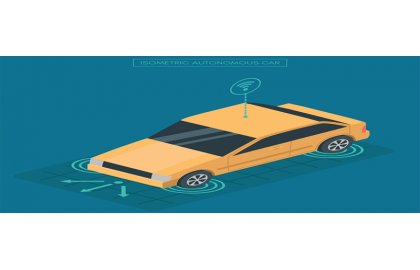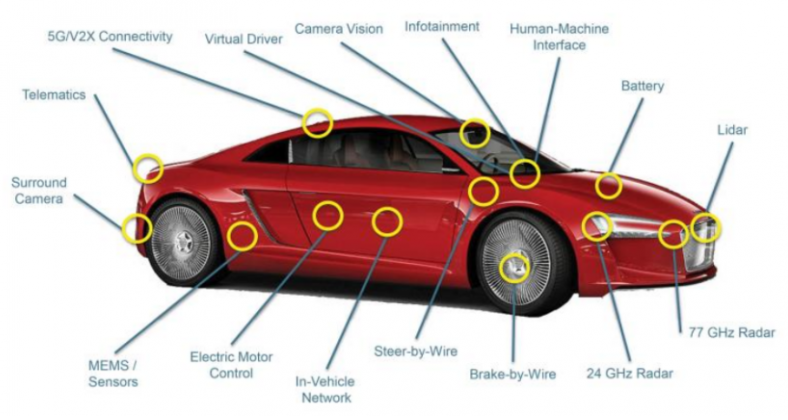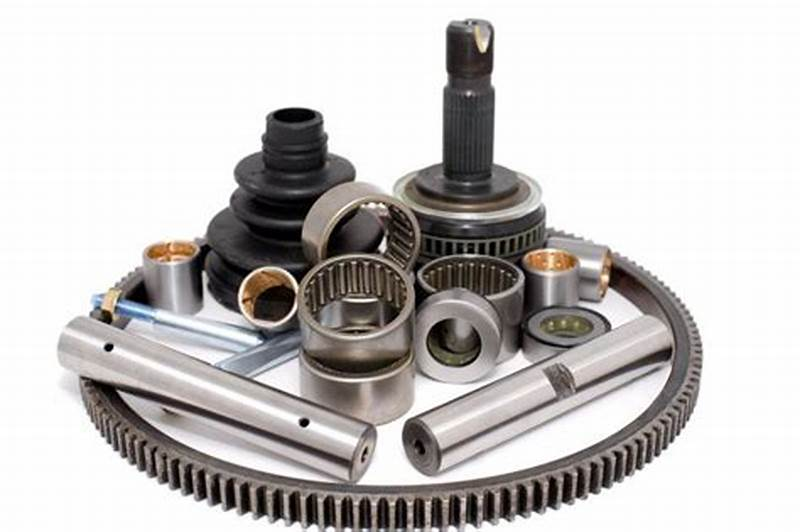Key components of self-driving cars

In order to ensure the safety of autonomous vehicles and provide a safe, efficient and pleasant way to travel, complex new technologies are needed in both the cloud and the edge. In addition, with the trend of data connection and electrification of powertrain, autonomous driving will promote the breakthrough development of semiconductor technology. This, combined with the mandatory requirements of ultra-high performance and high reliability in sensing, processing and communication, represents an excellent opportunity for technological innovation at present and in the future.
Sensors: in terms of components, lidar, radar and camera system are the most basic elements in the sensor suite required for safe operation of automatic driving. Moreover, although the functions served by radar and lidar are very complicated, they are likely to coexist in the automatic driving system for some time due to the advantages of sensors and the need for redundant systems in safety-critical applications. Camera-based sensing can provide automatic emergency braking, adaptive cruise control and lane departure warning on many passenger cars. In unmanned driving, the camera will be used in combination with other sensing technologies to generate a detailed 3D representation of the surrounding environment of the vehicle. Although radar can measure the relative position and velocity of objects, and lidar can produce accurate 3D mapping of objects, the camera-based sensing system uses abundant visual information to complete its images, including another car, large truck or bus, bicycle, pedestrian, and even street signs.

With the increasing popularity of vehicles equipped with cameras, they will become an important source for collecting key data such as road conditions, traffic congestion, potential safety hazards and parking spaces. With the development of image sensor, image processing algorithm and high-performance computing hardware, camera-based sensing technology is used in advanced driver assistance system (ADAS) and automatic driving system, which will still be the key innovation field of automatic driving development in the future. At present, many image recognition systems have been developed based on field programmable gate array (FPGA) and graphics processing unit (GPU), which are very suitable for high-performance parallel computing required by visual processing algorithms.
Processor: A large part of the development of automatic driving system focuses on the optimization of "virtual driver" or vehicle brain. The virtual drive system includes machine learning algorithms and middleware connected to the sensing, braking and communication subsystems of the vehicle. This technology is the core of auto-driving function: in fact, a possible future scenario will allow leading auto-driving developers to license their virtual driver software stack to the standard interfaces of sensors, actuators and data communication protocols, thus integrating them into the platform of vehicle manufacturers. However, this requires the development of industry standards and more mature sensing technology that can be separated from the control system.

Automatic driving is undoubtedly one of the most competitive industries! Whether it is traditional car companies, new technology companies, or auto parts giants, facing the automatic driving market This giant cake is coveted. Unlike the other, it seems that the automatic driving movements and layout of automotive parts manufacturers are not high, and they do not often account for headlines. However, this does not mean that they are not active enough for automatic driving layout.
Elecdeer is a professional auto parts purchasing platform.Elecdeer provides the best automatic auto parts.If you're looking for auto parts, visit www.elecdeer.com, a leading distributor of auto parts of the top auto parts shop.Contact us to have the answer you want.
